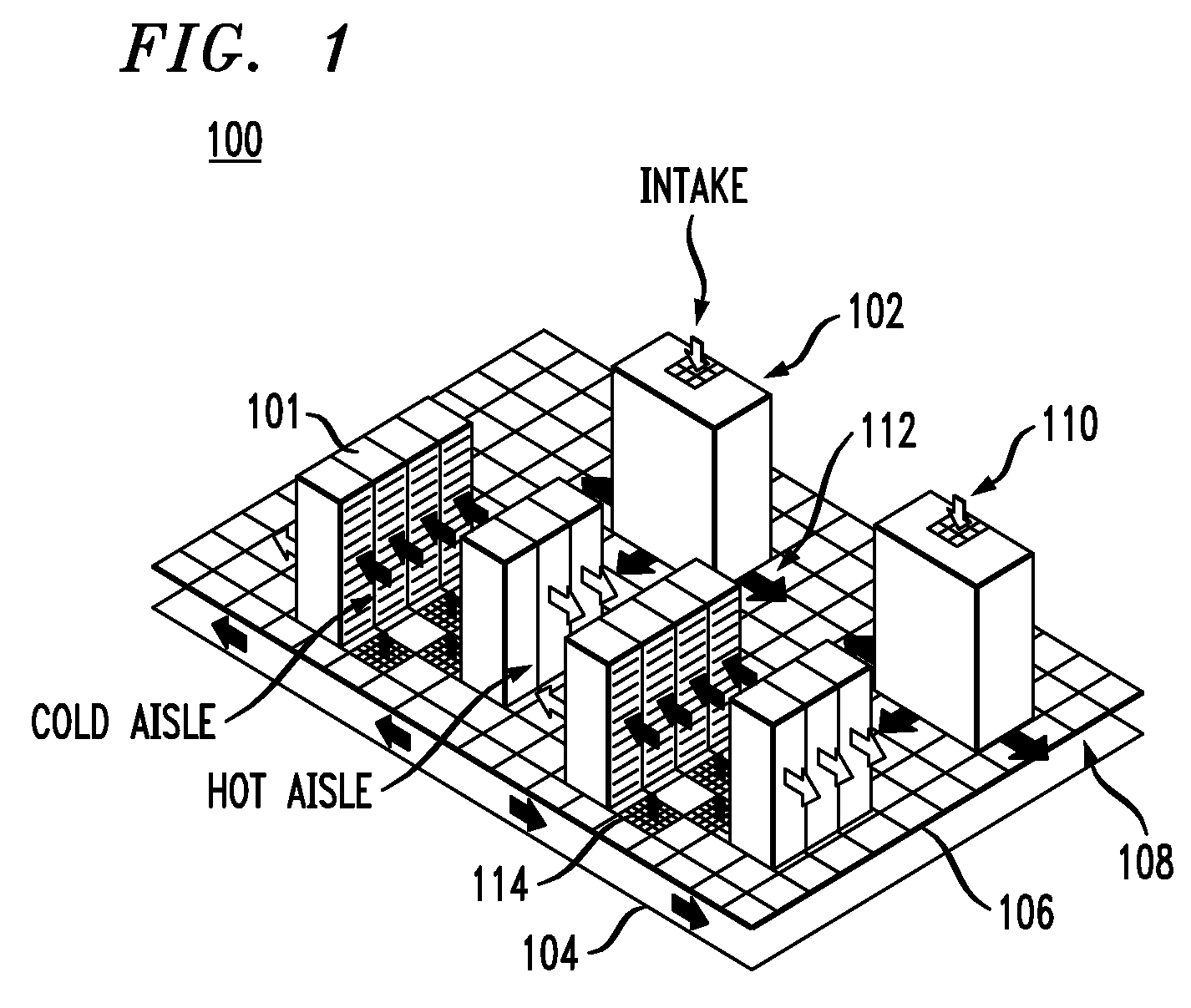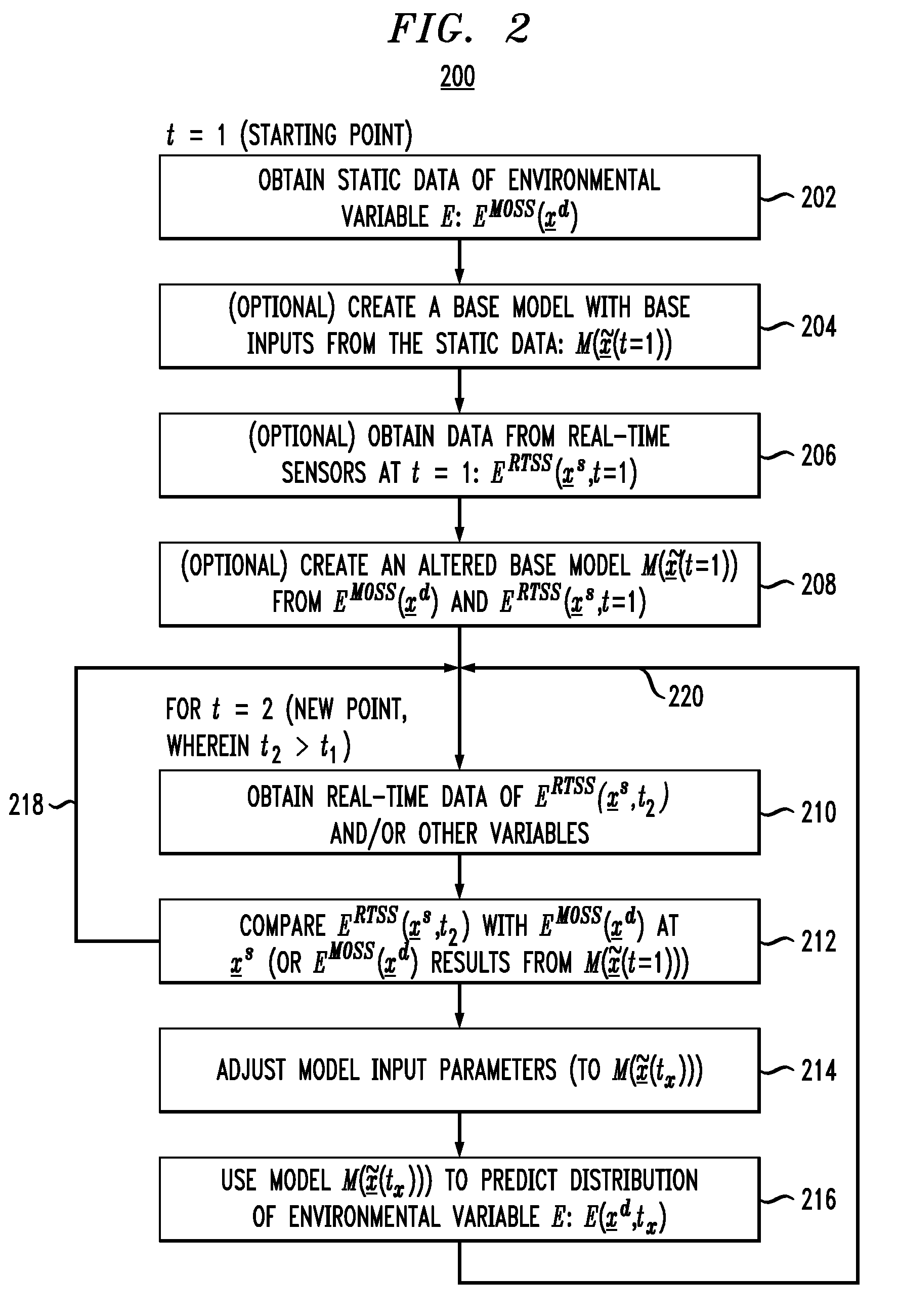Techniques to Predict Three-Dimensional Thermal Distributions in Real-Time
a technology of thermal distribution and real-time temperature, applied in the field of data centers, can solve the problems of increasing the energy consumption of computing hardware systems installed in data centers, limiting the future growth of the field of information technology, and common undesirable trade-offs
- Summary
- Abstract
- Description
- Claims
- Application Information
AI Technical Summary
Benefits of technology
Problems solved by technology
Method used
Image
Examples
example 1
[0083]Thermal data (EMOSS(xd)) was obtained via MMT V1.0 at time t1. Because MMT V1.0 provided such a dense data grid, a base model was not constructed. The real-time sensors were placed on the MMT V1.0 data grid and thus a sensor calibration was not required. New data was then gathered from the real-time sensors at a time, i.e., time t2, i.e., ERTSS(xs,t2) where no EMODS(xd) is available (see line 3 of example code below where value and, x, y, and z coordinates are read from the sensors). The ERTSS(xs,t2) was then compared with the initial EMOSS(xd) (at time t1) results at xs (see line 12 of example code below, where the initial values (room.GTemp) are compared with the latest readings (at time t2) (value)). The difference between ERTSS(xs,t2) and EMOSS(xd) was then modeled using a griding function (see line 15 of example code below). The model was then used to predict a complete temperature field at time t2 (see line 19 of example code below, where a new three-dimensional temperat...
example 2
[0084]EMOSS(xd) was obtained using temperature results from CFD calculations. Because these calculations are too slow to be repeated in real-time, the data was represented and modeled by a simple model, such as the Laplacian model approach as described in Attorney Reference No. YOR920080114US1 or a simple provisioning model (create M({tilde over (x)}(t1))). In the example using a Laplacian model approach, the complete data center was described by the physical dimensions and locations of its infrastructure and equipment, as well as by the power levels and the different air flow boundaries (and / or temperature boundaries) (see Attorney Reference No. YOR920080114US1 for a detailed discussion). Because the real-time sensors were not on the same grid as the CFD model results (compare with Example 1, described above), the real-time sensor data and the CFD model results had to be referenced to each other. In this example, the real-time data at time t1 ERTSS(xs,t1) was compared with the MOSS...
example 3
[0085]To demonstrate the effectiveness of the present real-time, three-dimensional analysis techniques, both MMT measurements (FIG. 10) and real-time sensor measurements (FIG. 11) were obtained for a sample data center. FIG. 10 is graph 1000 illustrating MMT measurements obtained from the sample data center, wherein circles (◯) are the MMT measurements, triangles (Δ) indicate server inlets and outlets and plus symbols (+) indicate sensors. Both the x-axis and the y-axis represent the data center dimensions measured in feet. As described above and as exemplified from graph 1000, the MMT V1.0 measurement data has high spatial resolution. As also described above, however, the MMT measurement data is temporally sparse, since for any given data center such measurements are typically performed only once or twice a year. FIG. 11 is graph 1100 illustrating real-time sensor observations, i.e., measurements from the sample data center, with 30-minute average temperature (measured in ° C.) plo...
PUM
 Login to View More
Login to View More Abstract
Description
Claims
Application Information
 Login to View More
Login to View More - R&D
- Intellectual Property
- Life Sciences
- Materials
- Tech Scout
- Unparalleled Data Quality
- Higher Quality Content
- 60% Fewer Hallucinations
Browse by: Latest US Patents, China's latest patents, Technical Efficacy Thesaurus, Application Domain, Technology Topic, Popular Technical Reports.
© 2025 PatSnap. All rights reserved.Legal|Privacy policy|Modern Slavery Act Transparency Statement|Sitemap|About US| Contact US: help@patsnap.com



